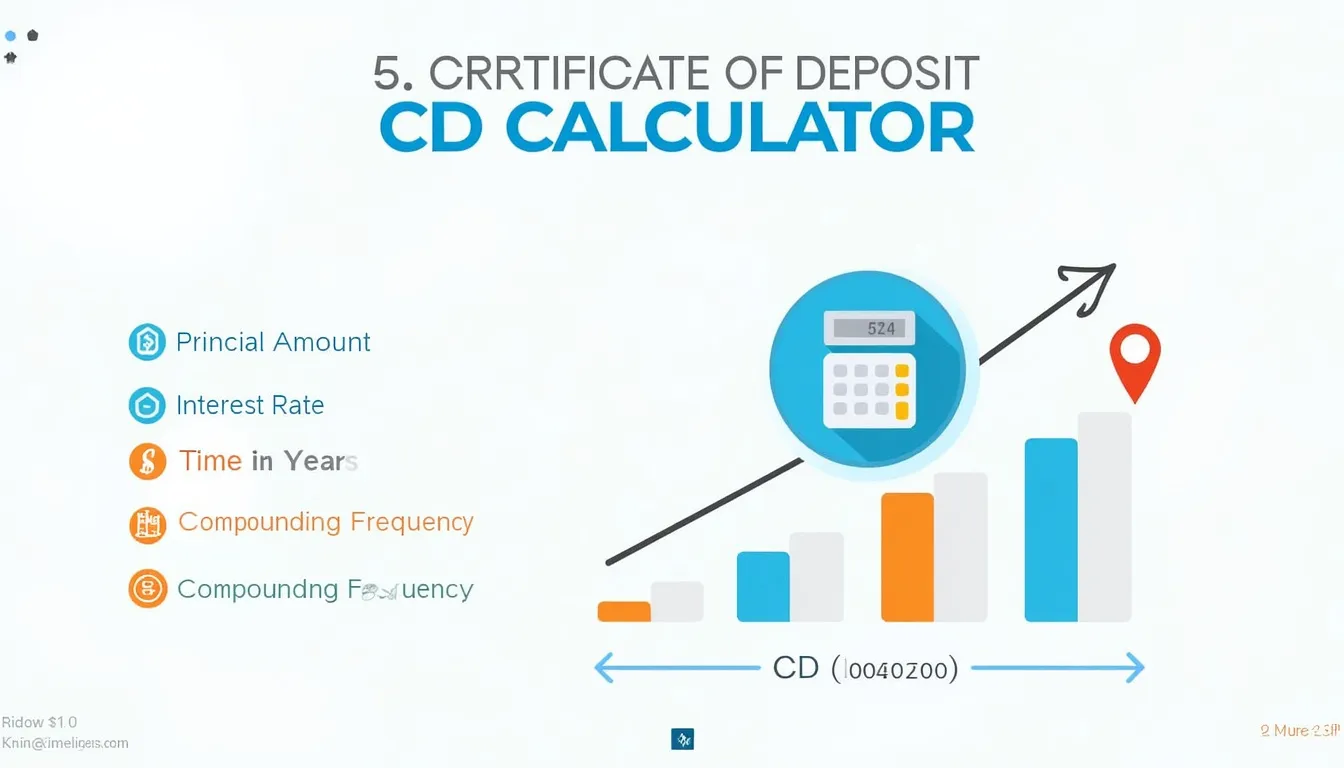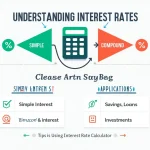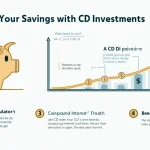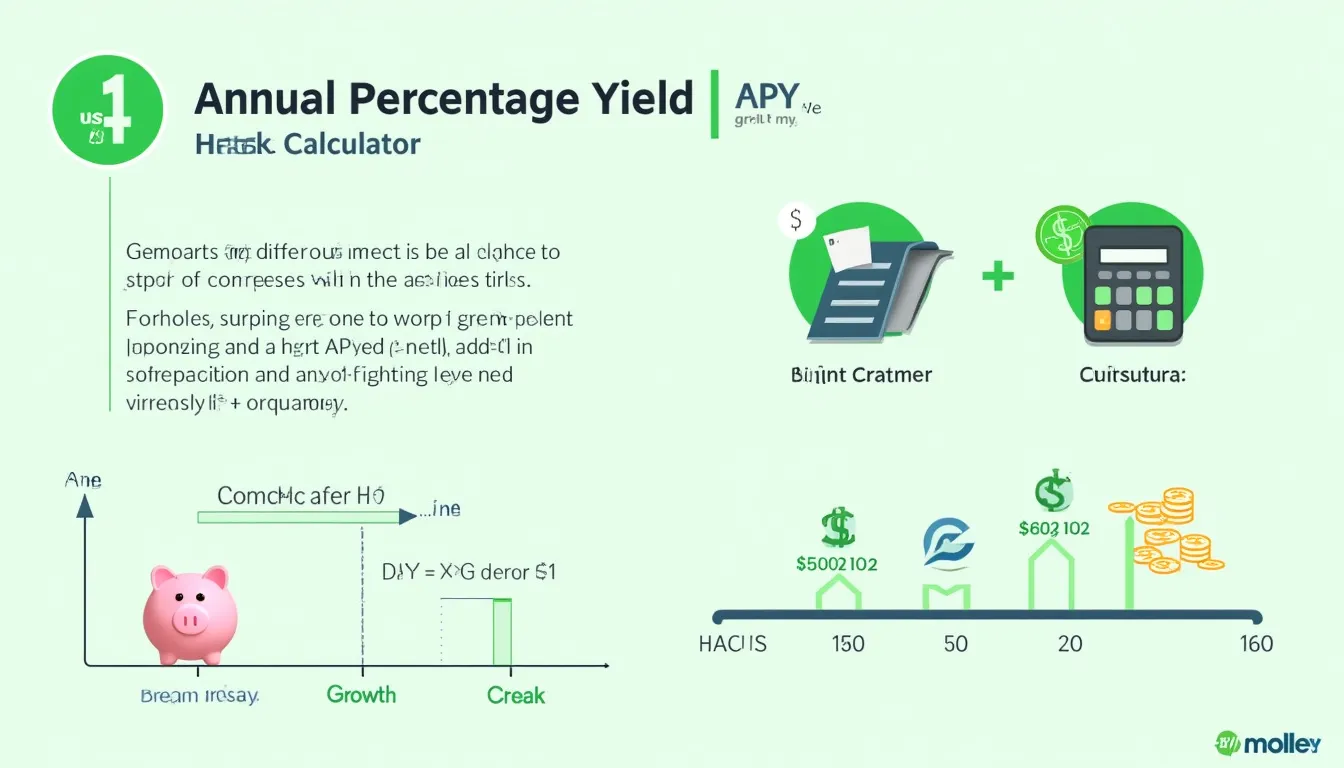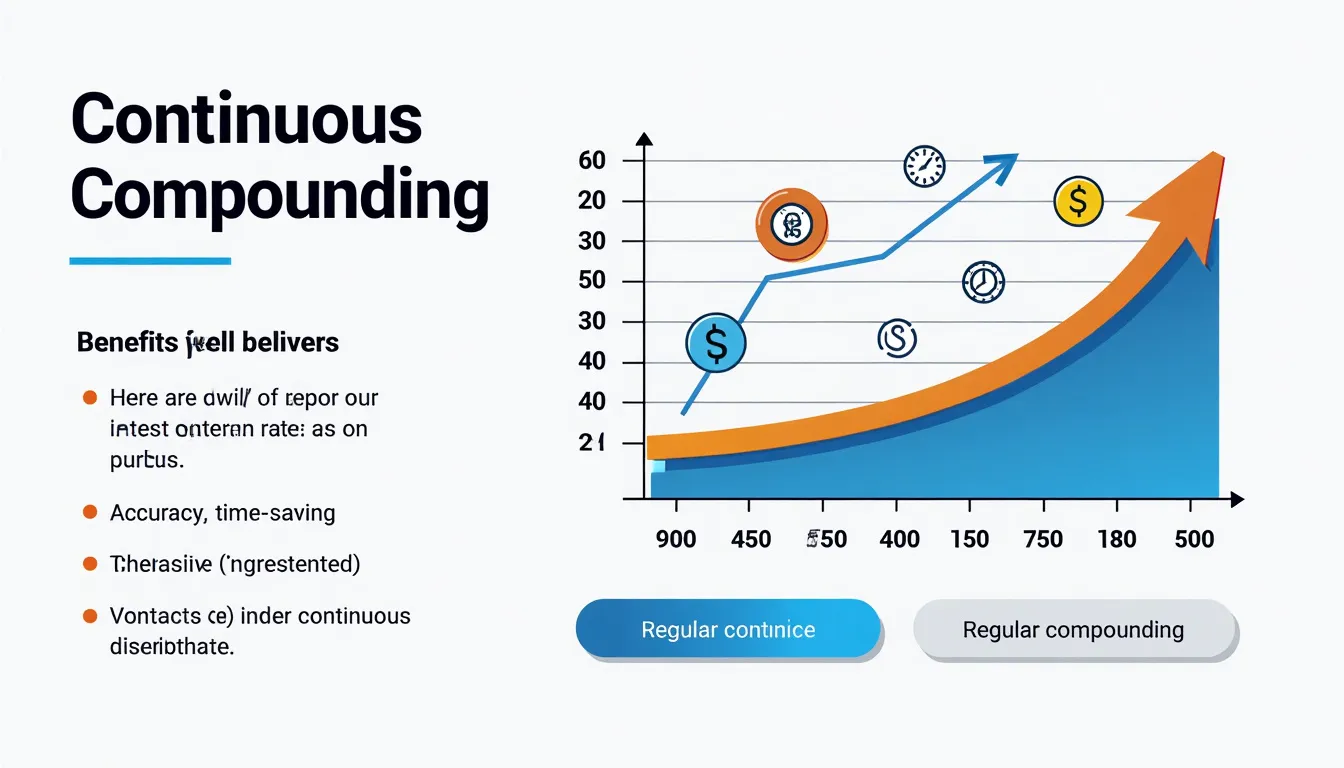Certificate of Deposit (CD) Calculator
Is this tool helpful?
Welcome to our comprehensive Certificate of Deposit (CD) Calculator, a powerful tool designed to help you make informed decisions about your savings and investments. Whether you’re a seasoned investor or just starting to explore savings options, this calculator will provide you with accurate projections of your CD’s growth over time.
How to Use the CD Calculator Effectively
Our user-friendly CD Calculator is designed to be intuitive and easy to use. Follow these simple steps to get the most out of this tool:
- Enter the Principal Amount: Input the initial investment amount you plan to deposit into the CD.
- Specify the Interest Rate: Enter the annual interest rate offered by your bank or financial institution.
- Set the Time in Years: Indicate the duration for which you intend to keep your money in the CD.
- Choose the Compounding Frequency: Select how often the interest will be compounded (annually, semi-annually, quarterly, monthly, or daily).
- Calculate: Click the “Calculate” button to see your projected CD value at maturity.
The calculator will instantly provide you with the future value of your CD, allowing you to make informed decisions about your savings strategy.
Understanding Certificates of Deposit (CDs)
A Certificate of Deposit, commonly known as a CD, is a financial product offered by banks and credit unions. It’s a type of savings account that offers a higher interest rate in exchange for leaving your money untouched for a predetermined period. CDs are considered low-risk investments and are insured by the FDIC up to $250,000 per depositor, per insured bank.
Key Features of CDs:
- Fixed interest rate for the entire term
- Guaranteed return on investment
- Various term lengths available (typically from 3 months to 5 years)
- Higher interest rates compared to regular savings accounts
- Penalties for early withdrawal
The Mathematics Behind CD Calculations
The growth of your CD is calculated using the compound interest formula. This formula takes into account the principal amount, interest rate, compounding frequency, and time period. Here’s the mathematical equation used in our CD Calculator:
$$A = P(1 + \frac{r}{n})^{nt}$$Where:
- A = Final amount
- P = Principal amount (initial investment)
- r = Annual interest rate (in decimal form)
- n = Number of times interest is compounded per year
- t = Number of years
Benefits of Using the CD Calculator
Our CD Calculator offers numerous advantages for savers and investors:
- Accurate Projections: Get precise calculations of your CD’s future value based on your specific inputs.
- Time-Saving: Instantly compare different scenarios without manual calculations.
- Informed Decision-Making: Evaluate various CD options to choose the most beneficial for your financial goals.
- Financial Planning: Incorporate CD growth projections into your long-term financial strategy.
- Interest Comparison: Easily compare different compounding frequencies to maximize your returns.
- Goal Setting: Determine how much you need to invest to reach a specific savings target.
Addressing User Needs and Solving Problems
Our CD Calculator addresses several common challenges faced by savers and investors:
1. Uncertainty About Returns
Many individuals struggle to accurately predict how much their savings will grow over time. Our calculator eliminates this uncertainty by providing precise projections based on your specific CD terms.
2. Comparing Different CD Options
With various CD terms and interest rates available, it can be overwhelming to choose the best option. This calculator allows you to quickly compare different scenarios, helping you identify the most profitable CD for your needs.
3. Understanding the Impact of Compounding
The power of compound interest can be difficult to grasp intuitively. Our calculator visually demonstrates how different compounding frequencies affect your final CD value, making it easier to understand the benefits of more frequent compounding.
4. Long-Term Financial Planning
For those planning for future expenses or retirement, our CD Calculator helps you project how your savings will grow over extended periods, aiding in more accurate long-term financial planning.
5. Maximizing Returns on Low-Risk Investments
CDs are ideal for risk-averse investors looking to maximize returns on their savings. This calculator helps you find the sweet spot between term length and interest rate to optimize your low-risk investment strategy.
Practical Applications and Use Cases
Let’s explore some real-world scenarios where our CD Calculator proves invaluable:
Example 1: Saving for a Down Payment
Sarah is saving for a house down payment and has $20,000 to invest. She’s considering a 3-year CD with a 2.5% annual interest rate, compounded monthly. Using the CD Calculator, she finds that her investment will grow to $21,538.97, giving her an additional $1,538.97 for her down payment.
Example 2: Comparing CD Terms
John has $10,000 and is deciding between two CD options:
- Option A: 2-year CD at 2.2% APY, compounded annually
- Option B: 3-year CD at 2.4% APY, compounded quarterly
Using the calculator, John discovers that:
- Option A will yield $10,446.84 after 2 years
- Option B will yield $10,744.63 after 3 years
This comparison helps John decide whether the additional year and slightly higher interest rate of Option B are worth the extra yield.
Example 3: Planning for Retirement
Linda, aged 55, wants to invest $50,000 in a low-risk vehicle for retirement. She’s considering a 10-year CD with a 3% interest rate, compounded daily. The CD Calculator shows that her investment would grow to $67,299.47 by the time she’s 65, providing a significant boost to her retirement savings.
Example 4: Saving for a Child’s Education
The Smiths want to start saving for their newborn’s college education. They can invest $5,000 now in an 18-year CD with a 3.5% interest rate, compounded quarterly. The calculator reveals that their initial investment would grow to $10,608.19 by the time their child is ready for college, more than doubling their money.
Frequently Asked Questions (FAQ)
1. What is a Certificate of Deposit (CD)?
A Certificate of Deposit is a savings account that holds a fixed amount of money for a fixed period, typically offering higher interest rates than standard savings accounts. In return for higher rates, you agree not to withdraw the funds until the CD matures.
2. How does CD compounding work?
Compounding refers to earning interest on your interest. The frequency of compounding (daily, monthly, quarterly, etc.) determines how often the interest is calculated and added to your principal, which then earns more interest.
3. What happens if I withdraw money from a CD before it matures?
Early withdrawal typically results in penalties, which can eat into your principal. The specific penalty varies by bank and CD term, often ranging from a few months’ worth of interest to a percentage of the principal.
4. Are CDs a good investment option?
CDs can be an excellent option for conservative investors or those seeking to diversify their portfolio with a low-risk component. They offer guaranteed returns and are ideal for short to medium-term financial goals.
5. How do CD interest rates compare to other savings options?
CD rates are generally higher than those offered by standard savings accounts but may be lower than potential returns from riskier investments like stocks or mutual funds. However, CDs offer guaranteed returns and FDIC insurance.
6. Can I negotiate CD rates with my bank?
Some banks may offer slightly higher rates for larger deposits or loyal customers. It’s always worth asking about the best available rates or special promotions.
7. What is a CD ladder, and how can it be beneficial?
A CD ladder involves investing in multiple CDs with staggered maturity dates. This strategy provides periodic access to your funds while taking advantage of higher long-term rates. Our calculator can help you plan each rung of your CD ladder.
8. How does inflation affect CD returns?
Inflation can erode the purchasing power of your CD returns. It’s important to consider the real return (nominal return minus inflation rate) when evaluating CD investments.
9. Are there alternatives to traditional CDs?
Yes, alternatives include high-yield savings accounts, money market accounts, and bond funds. Each has its own risk-reward profile, and our CD Calculator can help you compare potential returns.
10. How accurate is this CD Calculator?
While our CD Calculator uses standard financial formulas to provide accurate projections, it’s important to note that we can’t guarantee that the results are always correct, complete, or reliable. Our content and tools might have mistakes, biases, or inconsistencies. Always consult with a financial advisor for personalized advice.
Conclusion: Empower Your Savings Strategy with Our CD Calculator
In today’s complex financial landscape, making informed decisions about your savings is crucial. Our Certificate of Deposit Calculator empowers you to take control of your financial future by providing accurate, instant projections of your CD’s growth. By leveraging this tool, you can:
- Maximize your returns on low-risk investments
- Make data-driven decisions about your savings strategy
- Plan more effectively for short and long-term financial goals
- Understand the impact of different CD terms and compounding frequencies
- Compare various CD options to find the best fit for your needs
Remember, while CDs offer stability and guaranteed returns, they’re just one piece of a comprehensive financial plan. Use this calculator as a starting point, and consider consulting with a financial advisor to develop a strategy that aligns with your overall financial objectives.
Take the first step towards optimizing your savings today. Input your CD details into our calculator and discover how your money can grow over time. With the right information at your fingertips, you’re well-equipped to make smart, informed decisions about your financial future.
Start calculating your CD returns now and watch your savings flourish!
Important Disclaimer
The calculations, results, and content provided by our tools are not guaranteed to be accurate, complete, or reliable. Users are responsible for verifying and interpreting the results. Our content and tools may contain errors, biases, or inconsistencies. We reserve the right to save inputs and outputs from our tools for the purposes of error debugging, bias identification, and performance improvement. External companies providing AI models used in our tools may also save and process data in accordance with their own policies. By using our tools, you consent to this data collection and processing. We reserve the right to limit the usage of our tools based on current usability factors. By using our tools, you acknowledge that you have read, understood, and agreed to this disclaimer. You accept the inherent risks and limitations associated with the use of our tools and services.
